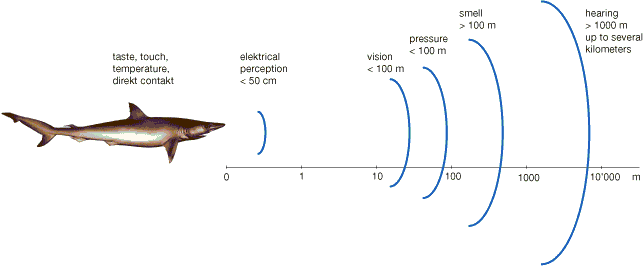Do Ocean Guardian Devices (Shark Shield) attract sharks?Updated a year ago
No, Ocean Guardian devices do not attract sharks and there is no scientific research to support this myth.
Let's start with the obvious non-scientific answer. IF an electrical deterrent COULD attract sharks, one would assume that every shark fisherman in the world would have bought one. Ocean Guardian has never sold a deterrent for this purpose!
Now consider the laws of physics which also ensure this is myth, the inverse-square law states that the electrical field strength is inversely proportional to the square of the distance from the source. This means if the distance away from an Ocean Guardian increases by a factor of 2, the electric field strength decreases by a factor of 4 (2^2), therefor you can see why it is impossible for the electrical field to travel any great distance.
The inverse-square law is also the reason why un-powered devices like magnets are of little value as shark deterrents because at a distance of only 10 cm the magnetic field is near zero.
There are three independent studies that confirm the above and shows that Ocean Guardian does not attract sharks. In all tests there is not difference in the number of sharks with the devices on or off. The first by C. Huveneers, Flinders University, South Australia, 2012 and the second by S. Collin, University of Western Australia, Ocean Institute, 2015. The papers can be reviewed & downloaded here & here.
Importantly, sharks can only sense electrical fields at very short distances (see below) typically less than 50 cm, and as electrical fields such as that generated by Ocean Guardian are dispersed rapidly in water as discussed above, meaning the shark needs to be in close range before sensing and reacting to the e-field.
In addition, sharks are not attracted to electronic shark deterrents because sharks would only be attracted (if at all) to a deterrent at the point at which the deterrents electric field strength has dropped off enough to represent a prey-like stimulus (approx. 1-100nV/cm), at which point, if they approach the device they should quickly realize that this is not prey (as the field strength will increase greatly) and then subsequently be deterred.
Finally, the question is at what distance from the device does a shark experience a field strength of approximately 1-100nV/cm and from research by the South African National Space Agency the modelling shows the field strength up to about 6m from the device would drop off very quickly to less than 1-100nV/cm, beyond 6m the electrical field can not be measured, it quickly goes down to zero as determined by the inverse-square law of physics.
Sharks Senses
Sharks have an array of senses, and each one is used at different distances from their prey. The senses used for electrical perception are only used at close range.
Sound - a long range sense (several kilometres)
Low frequency vibrations travel hundreds of meters through the water and are known to attract sharks. Typical sounds might be struggling fish or humans swimming.
Smell - a long range sense (several hundred metres)
Sharks will follow a scent trail over considerable distances. Blood, body fluids and secretions from shell fish may deposit a trail several kilometers from the source.
Pressure - a medium range sense (less then 100 metres)
The sharks lateral line and pit organ allow them to sense changes in pressure.
Sight - a medium range sense (less than 100 metres)
Most of the sharks that pose a threat to us have excellent eyesight and can readily track prey by sight, even in low light.
Eelectrical perception - a close range sense (less than 50 cm)
A particularly unique sense used by sharks at close quarters, consists of hundreds of tiny gel filled pores around the snout. These are known as Ampullae of Lorenzini and are used to pick up the electrical signals emitted by the nerve impulses from living creatures. When a shark closes in for an attack, a protective membrane pulls back over its eyes rendering it temporarily blind. For the few seconds this may take, the shark is able to track its prey by utilising its Ampullae of Lorenzini.

